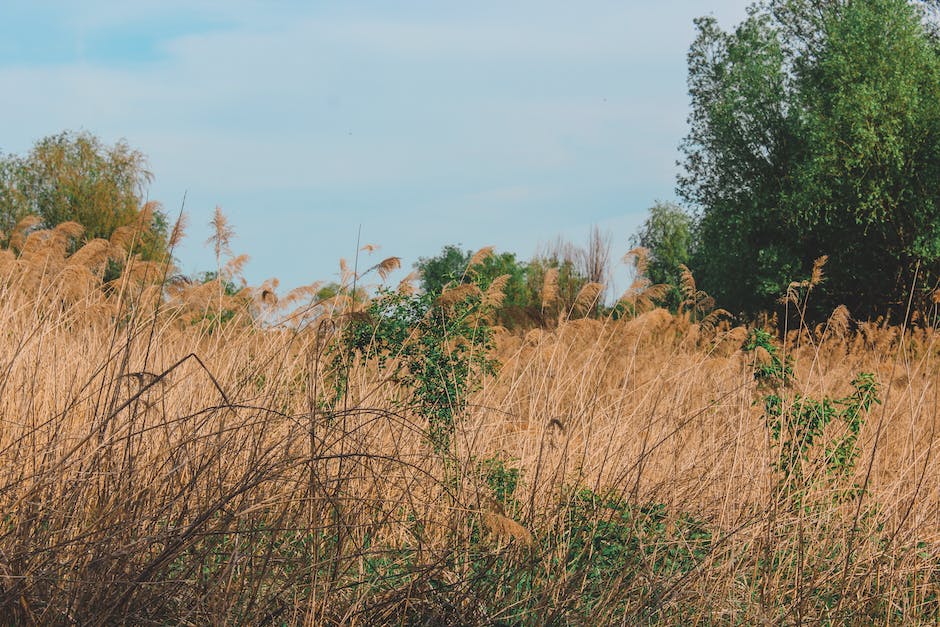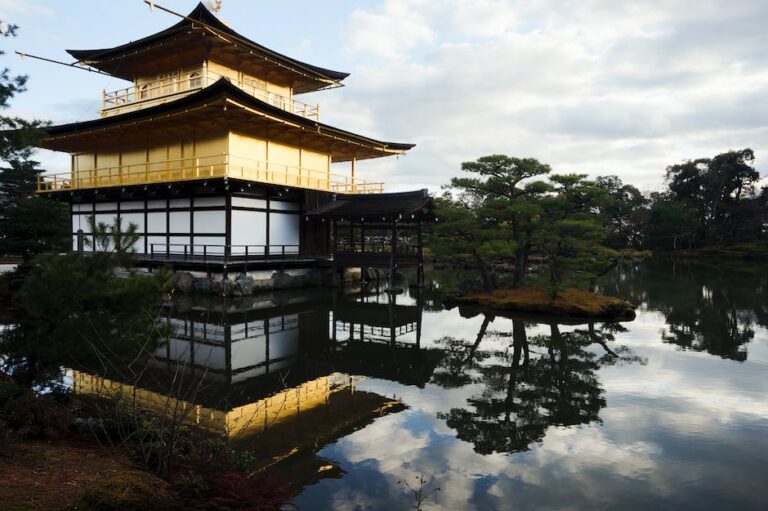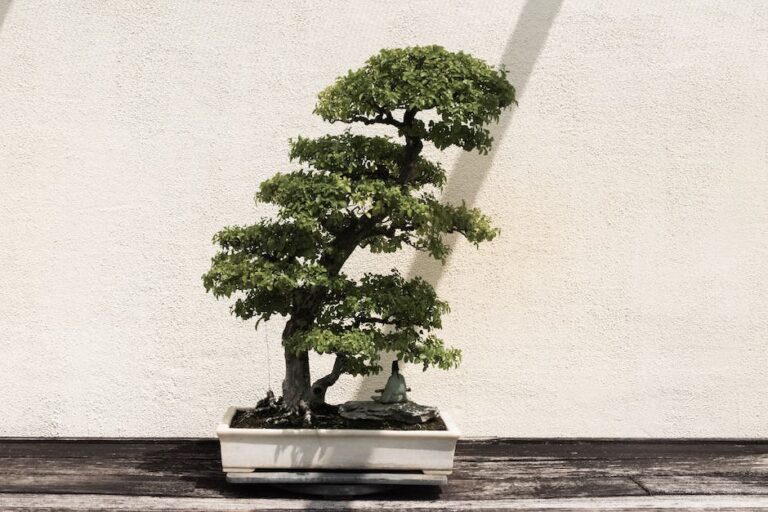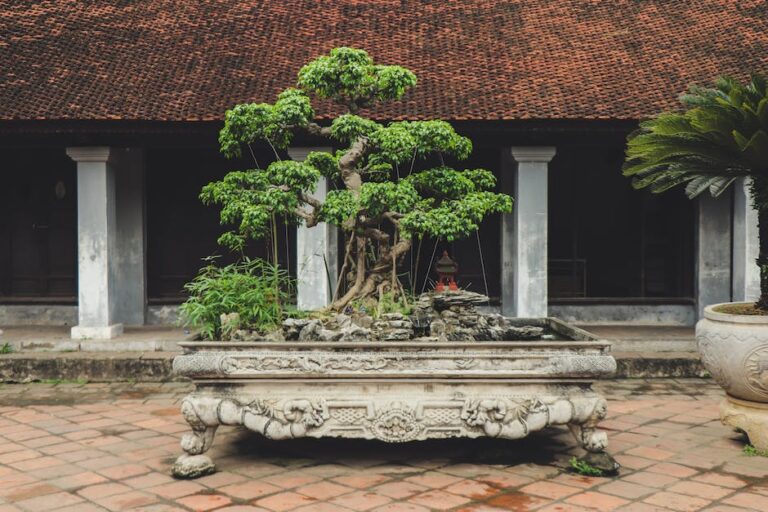What’S The Oldest Bonsai Tree In The World
-
Table of Contents hide
Table of Contents
- History of Bonsai: Tracing the Origins of the Oldest Bonsai Tree
- The Oldest Bonsai Tree: A Living Testament to Patience and Care
- Ancient Techniques: How the Oldest Bonsai Tree Has Been Preserved for Centuries
- Cultural Significance: Exploring the Symbolism of the Oldest Bonsai Tree
- Bonsai Conservation: Preserving the Legacy of the Oldest Bonsai Tree
- The Oldest Bonsai Tree’s Journey: From Ancient Roots to Modern Appreciation
- Lessons from the Oldest Bonsai Tree: Reflections on Longevity and Beauty
- Conclusion
The oldest bonsai tree in the world is believed to be the Ficus bonsai tree, which is estimated to be over 1,000 years old. This ancient tree is currently housed in the Crespi Bonsai Museum in Italy and is considered a living masterpiece of bonsai art. Its age and remarkable preservation make it a significant symbol of longevity and the artistry of bonsai cultivation.
History of Bonsai: Tracing the Origins of the Oldest Bonsai Tree
Bonsai trees have a rich history that dates back thousands of years. These miniature trees, carefully cultivated and pruned to mimic the shape and size of full-grown trees, have captivated people around the world with their beauty and artistry. But what is the oldest bonsai tree in the world? To answer that question, we must delve into the history of bonsai and trace the origins of this ancient art form.
The art of bonsai originated in China over 2,000 years ago. It was then known as “penjing,” which translates to “tray scenery.” The Chinese would create miniature landscapes in trays, using small trees and rocks to mimic the natural world. These early bonsai trees were not as refined as the ones we see today, but they laid the foundation for the art form.
Bonsai was later introduced to Japan in the 6th century, where it flourished and became an integral part of Japanese culture. The Japanese took the art of bonsai to new heights, refining the techniques and aesthetics of the trees. They believed that bonsai represented the harmony between man and nature, and it became a symbol of Zen Buddhism.
One of the oldest bonsai trees in the world can be found in the Tokyo Imperial Palace collection. Known as the “Sakura Bonsai,” this tree is estimated to be over 500 years old. It is a white flowering cherry tree, which is a popular choice for bonsai due to its delicate blossoms and graceful branches. The Sakura Bonsai has been carefully nurtured and pruned for centuries, and it stands as a testament to the longevity of these miniature trees.
Another ancient bonsai tree can be found in the Omiya Bonsai Art Museum in Saitama, Japan. This tree, known as the “Yamaki Pine,” is believed to be over 400 years old. It survived the atomic bombing of Hiroshima in 1945 and was later donated to the museum. The Yamaki Pine is a symbol of resilience and endurance, and it serves as a reminder of the power of nature.
While these are some of the oldest bonsai trees in the world, it is important to note that determining the exact age of a bonsai tree can be challenging. Bonsai trees are often passed down through generations, making it difficult to trace their origins. Additionally, the age of a bonsai tree is not solely determined by its physical age but also by the skill and expertise of the bonsai artist who cares for it.
In conclusion, the oldest bonsai trees in the world are a testament to the rich history and cultural significance of this ancient art form. The Sakura Bonsai and the Yamaki Pine are just two examples of the enduring beauty and resilience of bonsai trees. As we admire these miniature masterpieces, we are reminded of the harmony between man and nature and the importance of preserving this art form for future generations to enjoy.
The Oldest Bonsai Tree: A Living Testament to Patience and Care
What’s the Oldest Bonsai Tree in the World
Bonsai trees are a living testament to patience and care. These miniature trees, carefully cultivated and pruned, have captivated people around the world for centuries. They are a symbol of harmony between man and nature, and their beauty and elegance have made them a popular choice for both indoor and outdoor decoration. But have you ever wondered what the oldest bonsai tree in the world is?
The oldest known bonsai tree is a Japanese white pine, known as the Yamaki Pine. This remarkable tree is estimated to be over 800 years old, making it one of the oldest living bonsai trees in existence. It has survived through centuries of history, witnessing the rise and fall of empires, and is a true testament to the art of bonsai.
The Yamaki Pine has a fascinating story behind it. It was originally part of a collection of bonsai trees owned by the Yamaki family, who lived in Hiroshima, Japan. During World War II, when the atomic bomb was dropped on Hiroshima, the Yamaki family’s home was just two miles away from the epicenter of the blast. Miraculously, both the family and their bonsai trees survived the devastation.
After the war, the Yamaki family donated the tree to the United States National Arboretum in Washington, D.C. as a gesture of peace and reconciliation. It was a symbol of hope and resilience, a living reminder of the horrors of war and the power of nature to endure.
The Yamaki Pine is a stunning example of the artistry and skill required to create a bonsai tree. Its branches have been carefully trained and shaped over the centuries, creating a sense of balance and harmony. The tree’s trunk is gnarled and twisted, a testament to its age and the challenges it has overcome.
Caring for a bonsai tree requires a great deal of patience and attention to detail. These miniature trees need regular watering, pruning, and fertilizing to ensure their health and longevity. The Yamaki Pine has been lovingly cared for by a team of experts at the National Arboretum, who have dedicated themselves to preserving this living piece of history.
The age of the Yamaki Pine raises an interesting question: how long can a bonsai tree live? While there is no definitive answer, some bonsai trees have been known to live for several hundred years. The key to their longevity lies in the careful balance of light, water, and nutrients, as well as regular pruning to maintain their shape and size.
The Yamaki Pine serves as a reminder of the importance of patience and care in our own lives. Just as this ancient tree has weathered the storms of history, we too can find strength and resilience in the face of adversity. The art of bonsai teaches us to appreciate the beauty and simplicity of nature, and to cultivate a sense of harmony and balance in our own lives.
In conclusion, the Yamaki Pine is the oldest known bonsai tree in the world, with an estimated age of over 800 years. Its survival through centuries of history is a testament to the artistry and skill required to create and care for a bonsai tree. This remarkable tree serves as a symbol of hope and resilience, and a reminder of the power of nature to endure. So next time you admire a bonsai tree, take a moment to appreciate the patience and care that went into its creation, and the lessons it can teach us about life.
Ancient Techniques: How the Oldest Bonsai Tree Has Been Preserved for Centuries

Bonsai trees are a fascinating art form that has been practiced for centuries. These miniature trees, carefully cultivated and shaped, have captivated people around the world with their beauty and symbolism. One question that often arises when discussing bonsai trees is: what is the oldest bonsai tree in the world?
To answer this question, we must delve into the ancient techniques that have been used to preserve these living works of art for centuries. Bonsai trees are not simply potted plants; they require meticulous care and attention to thrive and survive for such a long time.
One of the oldest bonsai trees in the world is the Ficus retusa, also known as the “Great Banyan.” This magnificent tree is estimated to be over 250 years old and is located in the Acharya Jagadish Chandra Bose Indian Botanic Garden in Kolkata, India. The Great Banyan has an impressive canopy that covers an area of about 18,918 square meters, making it one of the largest trees in the world.
Preserving a bonsai tree for centuries requires a deep understanding of horticulture and a commitment to the art form. Ancient techniques such as pruning, wiring, and repotting are essential to maintaining the health and shape of the tree. These techniques have been passed down through generations, ensuring that the knowledge and skills required to care for bonsai trees are preserved.
Pruning is a crucial aspect of bonsai tree care. By carefully trimming the branches and roots, bonsai artists can control the growth and shape of the tree. This process requires precision and patience, as even the slightest mistake can have a significant impact on the tree’s overall appearance.
Wiring is another technique used to shape bonsai trees. By wrapping wire around the branches, artists can guide their growth and create the desired shape. This process must be done with caution, as excessive or improper wiring can damage the tree.
Repotting is also essential for the long-term health of a bonsai tree. Over time, the tree’s roots can become compacted and require more space to grow. Repotting involves carefully removing the tree from its pot, trimming the roots, and placing it in a larger container with fresh soil. This process rejuvenates the tree and ensures its continued growth.
In addition to these techniques, proper watering, fertilizing, and sunlight exposure are crucial for the survival of a bonsai tree. Each species of tree has specific requirements, and bonsai artists must carefully monitor and adjust these factors to maintain the tree’s health.
The preservation of the oldest bonsai tree in the world is a testament to the dedication and skill of the artists who have cared for it over the centuries. Through their knowledge and expertise, they have ensured that this living work of art continues to thrive and inspire awe in all who see it.
In conclusion, the oldest bonsai tree in the world, the Great Banyan, is a testament to the ancient techniques that have been used to preserve these living works of art for centuries. Through careful pruning, wiring, repotting, and other horticultural practices, bonsai artists have been able to maintain the health and shape of these miniature trees. The preservation of the Great Banyan serves as a reminder of the beauty and longevity that can be achieved through the art of bonsai.
Cultural Significance: Exploring the Symbolism of the Oldest Bonsai Tree
Bonsai trees have captivated people around the world for centuries with their unique beauty and intricate designs. These miniature trees, carefully cultivated and shaped over time, hold a special place in many cultures, particularly in Japan. One of the most fascinating aspects of bonsai trees is their longevity, with some specimens living for hundreds of years. In this article, we will explore the cultural significance of the oldest bonsai tree in the world and delve into the symbolism it represents.
The oldest bonsai tree in the world, known as the “Sandai-Shogun-no-Matsu,” is a Japanese white pine that has been carefully nurtured for over 500 years. This remarkable tree is currently housed in the Tokyo Imperial Palace and is considered a national treasure in Japan. Its age and history make it a symbol of resilience, strength, and endurance.
In Japanese culture, bonsai trees are seen as a representation of nature in miniature form. They are believed to embody the essence of the natural world and serve as a reminder of the beauty and harmony found in nature. The oldest bonsai tree, with its centuries-old existence, embodies this belief and serves as a living testament to the enduring power of nature.
The symbolism of the Sandai-Shogun-no-Matsu extends beyond its age and serves as a reflection of Japanese history and tradition. Bonsai trees have long been associated with Zen Buddhism, a philosophy that emphasizes simplicity, mindfulness, and the appreciation of the present moment. The meticulous care and attention given to bonsai trees mirror the Zen practice of meditation and self-reflection.
Furthermore, the art of bonsai is deeply rooted in Japanese aesthetics, particularly the concept of wabi-sabi. Wabi-sabi celebrates imperfection, transience, and the beauty found in the natural cycle of growth and decay. The oldest bonsai tree, with its weathered appearance and gnarled branches, embodies the wabi-sabi philosophy, reminding us of the fleeting nature of life and the beauty that can be found in imperfection.
The cultural significance of the oldest bonsai tree extends beyond Japan and has influenced the art of bonsai cultivation worldwide. Bonsai enthusiasts from different countries have embraced the art form, seeking to replicate the beauty and symbolism of these miniature trees. The Sandai-Shogun-no-Matsu serves as an inspiration for bonsai artists around the world, reminding them of the patience, dedication, and skill required to create a truly remarkable bonsai tree.
In conclusion, the oldest bonsai tree in the world holds immense cultural significance, representing the enduring power of nature, the history and tradition of Japan, and the beauty found in imperfection. This remarkable tree serves as a symbol of resilience, strength, and the appreciation of the present moment. Its influence extends beyond Japan, inspiring bonsai enthusiasts worldwide to cultivate their own miniature masterpieces. The Sandai-Shogun-no-Matsu is a living testament to the artistry and symbolism of bonsai trees, reminding us of the profound connection between humans and nature.
Bonsai Conservation: Preserving the Legacy of the Oldest Bonsai Tree
Bonsai trees are a fascinating art form that has been practiced for centuries. These miniature trees, carefully cultivated and shaped, have captivated the hearts of many enthusiasts around the world. One question that often arises among bonsai lovers is: what is the oldest bonsai tree in the world?
The answer to this question is not as straightforward as one might think. Bonsai trees, by their very nature, require meticulous care and attention to thrive. They are living organisms that can live for hundreds of years if properly cared for. However, determining the exact age of a bonsai tree can be a challenging task.
One contender for the title of the oldest bonsai tree in the world is the Ficus retusa bonsai tree, also known as the “Great Banyan.” This magnificent tree is located in the Acharya Jagadish Chandra Bose Indian Botanic Garden in Kolkata, India. It is estimated to be over 250 years old and covers an area of about 14,500 square meters. The Great Banyan is a true testament to the longevity and resilience of bonsai trees.
Another notable bonsai tree that is often mentioned in discussions about the oldest bonsai tree is the “Sandai-Shogun-no-Matsu” or the “Third Shogun’s Pine.” This ancient pine tree is housed in the Tokyo Imperial Palace in Japan and is believed to be over 500 years old. It has survived numerous natural disasters and has been carefully preserved by generations of bonsai masters.
While these two bonsai trees are certainly impressive in terms of age, it is important to note that determining the exact age of a bonsai tree can be a challenging task. Bonsai trees are often passed down through generations, making it difficult to trace their origins accurately. Additionally, the practice of bonsai cultivation has evolved over time, with different techniques and styles being developed.
Preserving the legacy of these ancient bonsai trees is of utmost importance. Bonsai conservation efforts aim to protect and maintain these living treasures for future generations to enjoy. This involves careful monitoring of the trees’ health, regular pruning, and providing the necessary nutrients and water to ensure their longevity.
In recent years, there has been a growing interest in bonsai conservation, with organizations and individuals working together to preserve these ancient trees. Techniques such as air-layering and grafting are used to propagate new bonsai trees from the original specimens, ensuring that their legacy lives on.
Furthermore, education plays a crucial role in bonsai conservation. By raising awareness about the importance of preserving these ancient trees, more people can appreciate their beauty and understand the significance of their cultural and historical value. Workshops, exhibitions, and publications are just some of the ways in which enthusiasts and experts come together to share their knowledge and passion for bonsai conservation.
In conclusion, the oldest bonsai tree in the world is a topic of much debate and speculation. While the Great Banyan and the Third Shogun’s Pine are often mentioned as contenders for this title, determining the exact age of a bonsai tree can be challenging. Nevertheless, the preservation and conservation of these ancient trees are of utmost importance. Through careful care, propagation, and education, we can ensure that the legacy of these remarkable living treasures continues for generations to come.
The Oldest Bonsai Tree’s Journey: From Ancient Roots to Modern Appreciation
Bonsai trees have captivated people around the world with their miniature beauty and ancient charm. These living works of art have a rich history that dates back centuries, and one question that often arises is: what is the oldest bonsai tree in the world? To answer this question, we must delve into the fascinating journey of the oldest bonsai tree, from its ancient roots to its modern appreciation.
The art of bonsai originated in China over a thousand years ago, where it was known as “penjing.” It was later introduced to Japan, where it evolved into the art form we know today. Throughout its long history, bonsai has been treasured for its ability to capture the essence of nature in a small, carefully cultivated form.
The oldest bonsai tree in the world is believed to be a 500-year-old white pine (Pinus parviflora) known as the “Sandai-Shogun-no-Matsu.” This remarkable tree has been carefully nurtured and passed down through generations of bonsai enthusiasts. Its journey began in the 17th century when it was first cultivated by a Japanese samurai lord.
Over the centuries, the Sandai-Shogun-no-Matsu has survived wars, natural disasters, and changes in ownership. It has been carefully tended to by skilled bonsai masters who have dedicated their lives to its preservation. Today, it resides in the collection of the Omiya Bonsai Art Museum in Saitama, Japan, where it continues to inspire awe and admiration.
The longevity of the Sandai-Shogun-no-Matsu is a testament to the artistry and dedication of bonsai enthusiasts throughout history. It serves as a living link to the past, reminding us of the beauty and resilience of nature. This ancient tree has witnessed the passage of time and carries with it the stories of those who have cared for it over the centuries.
In recent years, there has been a resurgence of interest in bonsai, both in Japan and around the world. People are drawn to the art form’s meditative qualities and the opportunity to connect with nature on a deeper level. Bonsai has become a popular hobby for many, with enthusiasts spending hours meticulously shaping and caring for their miniature trees.
The appreciation for bonsai has also extended beyond its traditional Japanese roots. Today, bonsai artists from all over the world are pushing the boundaries of the art form, experimenting with different styles and techniques. This global exchange of ideas has enriched the bonsai community and brought new perspectives to the ancient practice.
As we marvel at the beauty and longevity of the oldest bonsai tree in the world, we are reminded of the importance of preserving and cherishing our natural heritage. Bonsai teaches us patience, discipline, and the value of nurturing something over time. It is a reminder that even the smallest things can have a profound impact and that beauty can be found in the most unexpected places.
So, the next time you encounter a bonsai tree, take a moment to appreciate its journey. Whether it is a centuries-old masterpiece or a newly cultivated sapling, each bonsai tree carries with it a story of dedication, artistry, and the enduring power of nature.
Lessons from the Oldest Bonsai Tree: Reflections on Longevity and Beauty
What’s the Oldest Bonsai Tree in the World?
Bonsai trees have captivated people around the world for centuries with their miniature size and intricate beauty. These living works of art require careful cultivation and patience to create, and they can live for hundreds of years if properly cared for. Among the many bonsai trees that exist today, one stands out as the oldest known specimen in the world.
The oldest bonsai tree in the world is a Japanese White Pine (Pinus parviflora) known as the “Sandai-Shogun-no-Matsu,” which translates to “Third Shogun’s Pine.” This remarkable tree is estimated to be over 500 years old, making it a living testament to the art of bonsai and the passage of time.
The Sandai-Shogun-no-Matsu has a rich history that dates back to the 16th century. It is believed to have been originally cultivated by the third shogun of the Tokugawa dynasty, Tokugawa Iemitsu, who ruled Japan from 1623 to 1651. The tree was passed down through generations of the Tokugawa family and eventually found its way into the hands of bonsai master Kobayashi Kiyochika in the early 20th century.
Kobayashi Kiyochika dedicated his life to the care and refinement of the Sandai-Shogun-no-Matsu. He meticulously pruned and shaped the tree, creating its distinctive windswept appearance. Kiyochika’s dedication to the tree’s well-being ensured its longevity and allowed it to become the oldest bonsai tree in the world.
The Sandai-Shogun-no-Matsu is currently housed in the Tokyo Imperial Palace, where it is carefully tended to by a team of skilled bonsai caretakers. Its age and historical significance make it a national treasure in Japan, and it serves as a symbol of the country’s rich cultural heritage.
Reflecting on the longevity and beauty of the oldest bonsai tree in the world, there are valuable lessons to be learned. First and foremost, the Sandai-Shogun-no-Matsu teaches us the importance of patience and dedication. Bonsai trees require constant care and attention, and it is through the commitment of individuals like Kobayashi Kiyochika that they can thrive for centuries.
Additionally, the Sandai-Shogun-no-Matsu reminds us of the beauty that can be found in the passage of time. The tree’s windswept appearance tells a story of resilience and strength, as it has weathered countless storms and stood the test of time. This serves as a powerful metaphor for our own lives, reminding us to embrace the challenges we face and find beauty in the journey.
Furthermore, the Sandai-Shogun-no-Matsu highlights the importance of preserving and honoring our cultural heritage. Bonsai trees are not just objects of beauty; they are living links to our past. By caring for and appreciating these ancient trees, we can connect with the generations that came before us and gain a deeper understanding of our own place in history.
In conclusion, the oldest bonsai tree in the world, the Sandai-Shogun-no-Matsu, is a testament to the art of bonsai and the passage of time. Its age and historical significance make it a cherished national treasure in Japan. Reflecting on its longevity and beauty, we can learn valuable lessons about patience, resilience, and the importance of preserving our cultural heritage. The Sandai-Shogun-no-Matsu serves as a reminder to embrace the challenges we face and find beauty in the journey of life.
Conclusion
The oldest bonsai tree in the world is believed to be the Ficus bonsai tree, which is estimated to be over 1,000 years old.



